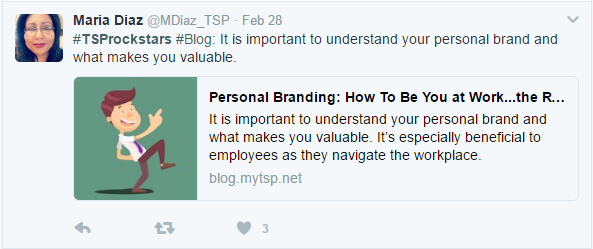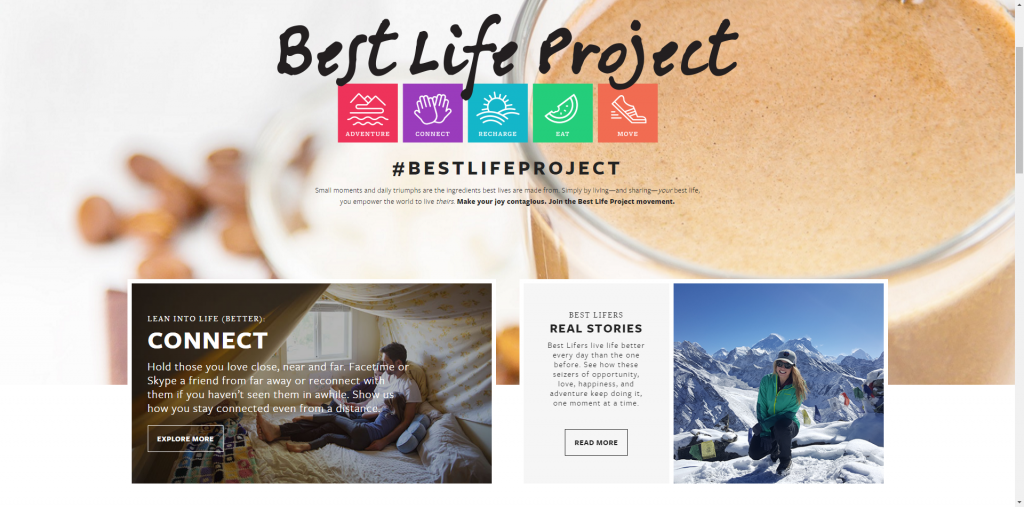Inbound Marketing: How to bust out of your social media growth plateau
You know how people chat in the office kitchen about hitting a plateau in their diet and exercise routine? Probably the most likely offender is Linda from HR.
Sometimes that can happen with social media too — you’re on a steady diet of energizing engagement, and then all of a sudden, you can’t get ahead. My co-worker, who runs our social media, and I were just commiserating about how these frustrating plateaus can come out of nowhere — one week, it’s three followers more, the next, it’s four followers less.
As with your exercise habits, the answer to a social media plateau is most likely a change in routine.
If you don’t mind me saying so, mining MarketingSherpa’s content or signing up for our inbound newsletter for ideas is a good place to start. It worked for us, after all.
It doesn’t have to be with us though, of course. Do some searching. Check out different websites or even other businesses’ social media accounts to see what your peers are doing.
However, with my intimate knowledge of our extensive library of content, allow me to guide you to some that might be of assistance for this query.
Case study #1. B2B Marketing: Turning employees into brand ambassadors increases social media followers for IT services firm
For MarketingSherpa’s social media, we decided to shake up our plateau by taking the advice of one of our own case studies. TSP, an IT services firm in Dallas, increased LinkedIn followers by 51% in a year by enlisting employees as social media ambassadors.
We’ve decided to set up a similar system within our own company, alerting socially active employees to the published content that has gone out that week and encouraging them to share it on their social media platforms.
TSP, for its first 12 or 13 years, had zero marketing or brand presence, according to Chris Scaggs, Senior Director, Talent and Brand Management, TSP. The company had seen double-digit growth every single year, hiring from 75 to 150 employees yearly — it was hard to justify any marketing spend.
Their need came from a desire to attract top tech talent. So they revamped the website and began creating content and posting on social media.
After LinkedIn, the company ventured into Twitter, adding in Instagram and Facebook as well. With all the progress Skaggs and his team were making, going from nothing to full steam ahead in producing quality content, they realized they might have been missing something.
“We saw we were losing such an opportunity with our employees,” he said.
Employees would occasionally share content when they saw it, he said. The desire to share it was there, but employees didn’t directly know what was going up and when.
Skaggs realized what was possible when he saw an Edelman Trust Survey that showed how much more influential employees’ voices could be. In fact, Edelmen’s 2016 study highlighted that employees who trust in leadership are more likely to advocate for their company, and peers and employees are even more credible than CEOs.
They decided to mobilize their employees by creating the #TSProckstars program, recruiting employees into a program that would alert them to new content and even give suggestions for what to post on to which platforms.
“I think when you look at all the employee-engagement-type metrics, that’s certainly a big push not only with millennials but even other generations in the workforce as having that sense of oneness where your values align with the company,” Skaggs said.
Case study #2. Inbound Marketing: How nutrition brand Vega empowered employees to build friendships with customers
This case study also used employees to shake up its social media. Taking advantage of resources you already have is always a great tactic.
Vega, a premium plant-based nutrition brand, wanted to build a greater connection with customers. They had a bigger campaign going on, the “Best Life Project,” that built up content around a single call to action — getting people to post themselves living their best life and tagging it with #BestLifeProject.
There was an offshoot of this campaign called “Surprise and Delight,” which allowed the team access to a small budget to use at their own discretion in order to, well, surprise and delight customers they saw going above and beyond on social media.
“It’s such a small thing, but just letting the decisions be in the hands of our consumer engagement team is very powerful. They may even be new to the company … it’s a very Vega way to do things, which is saying [that] we believe in you,” said Bridgette Clare, Education and Engagement Team Lead, Vega.
It’s a core company value to connect with people on a human level and reach out beyond a screen-to-screen connection, she added, and empowers not only employees but customers as well.
For example, they found a mom and her son who were really into jiu-jitsu. The team learned more about them via social media and sent a whole bunch of products to help support them with that.
That effort, which was originally intended to be a small offshoot, became a lasting campaign that has helped to drive Vega’s positive brand sentiment on Instagram to 98.5%.
Case study #3. Inbound Marketing: Family-owned business competes with industry leaders through Vine campaign
“I would say 10 viewings of one Vine is more impactful than one 60-second commercial,” Danny Gavin, Vice President and Director of Marketing, Brian Gavin Diamonds, said.
Brian Gavin Diamonds is a midsized, family-owned company, and they needed to be able to compete with the large budgets of its industry competitors. Social media seemed like an innovative landscape to level the playing field. The team decided to try to stand on Vine, a platform not many of their competitors were active on, where they could stand out.
“The nice thing is we’re subtly showing the brand, but we’re not shoving it in your face, and that’s kind of what you have to do on social,” Gavin said.
The products were shown off in the six-second videos, he added, saying, “If you would add all the diamonds together in there, you’re talking about more than a million dollars’ worth of diamonds.”
The campaign reached an estimated 1.63 million unique viewers and was featured in a major jewelry industry publication. Moving on into the first quarter of 2015, it saw a 13% year-over-year increase over the first quarter of 2014.
You might also like…
Inbound Marketing: How influencer marketing attracted 100,000 website clicks to luxury mattress site
Inbound Marketing 2016: How marketers connected with millennials and built trust in the marketplace
Download the free Quick Guide to Inbound Marketing for B2B
10 tips to attract and engage your audience in a helpful (not salesy) way
Categories: Inbound Marketing brand ambassadors, Inbound Marketing, instagram, LinkedIn, social media, Vine











